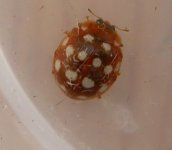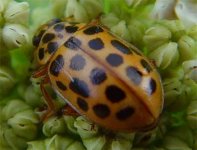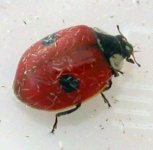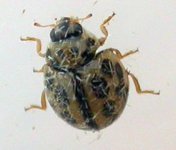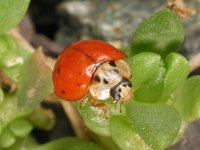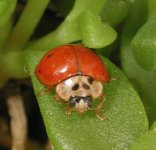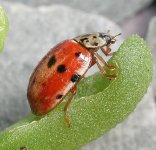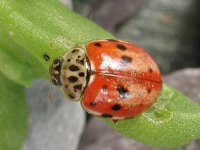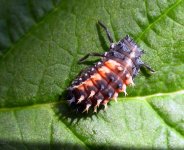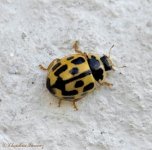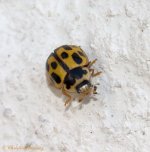paul mabbott
Urban space man
I found some ladybirds in my garden today (mostly on privet I think). I think they are harlequin, orange and ? seven-spot but if any of you experts could confirm or correct, I'd be grateful.
Ken
I think your listing was back to front as they appear on our messages ... I would say (as I see them!) cream-spot ladybird (Calvia quattuordecimpunctata), pine ladybird (Exochomus quadripustulatus) and, yes, 'harlequin' ladybird (Harmonia axyridis).
I wouldn't like to be too dogmatic about the first one although I only see fourteen patches (Halyzia sedecimguttata has sixteen spots, rarely ten or twelve ...).... but it's possible to imagine some yellow on the forebody (pronotum) which is typical of the orange ladybird. Do you have an alternative view of the pronotum?
Last edited:




